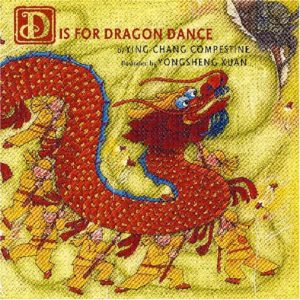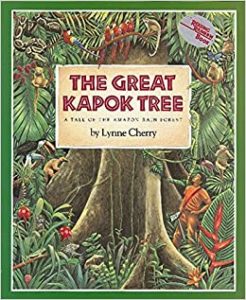Connecting Across Cultures: Literature

Global Education Across the Curriculum
In a world that is increasingly interconnected, it is important for students in the United States to develop an understanding and appreciation for the history, culture, and traditions of their peers in other nations.
Through this mini-blog series we are highlighting authors Mary Ann Buchino and Bob Herring and there book on global education: Connecting Across Cultures.
“Global Education can be one big, open-ended adventure. The students learn about the people of other countries through the stories they read, games in physical education, art projects, music, and math. They learn from the students and guest speakers that they meet. When maps are used in all subjects, they’re not just memorizing; the maps have meaning. They get a sense of “other.” Children as young as kindergarten see the adults around them interested in the culture of other people. It becomes part of everyday life. It becomes part of who we are.”
– Comment from a teacher in a school with global education across the curriculum
Integrating global education into the curriculum is generally inexpensive and can add a special dimension to any subject area. It is best when done across all curriculum areas so that the students get a holistic picture of different cultures. They see cultures through literature, art, music, physical education, as well as math, science, and of course, history. In this chapter the reader will find suggestions for integration global education into all areas of the curriculum.
Literature
The list of children’s books that focus on stories from other cultures is long indeed. Consultation with the school librarian or the children’s librarian from the local public library is an excellent way to find books and stories that will be meaningful for your students.
Kindergarten
 In kindergarten as teachers introduce the alphabet, books such as D is for Dragon Dance provide a fun way to help students remember the sound that the letter D makes while providing information about Chinese culture.
In kindergarten as teachers introduce the alphabet, books such as D is for Dragon Dance provide a fun way to help students remember the sound that the letter D makes while providing information about Chinese culture.
Additionally, folk tales such as Stone Soup from Sweden, A Lion on the Path from Africa, and The Enormous Turnip from Russia are great for quiet time and listening activities.
Primary Level
 Primary-level language arts often teach students to explore word choices, examine different perspectives, compare and contrast settings and characters, a can be read and then and make inferences. Stories such as Mulan set in China be read compared to the movie.
Primary-level language arts often teach students to explore word choices, examine different perspectives, compare and contrast settings and characters, a can be read and then and make inferences. Stories such as Mulan set in China be read compared to the movie.
The Great Kapok Tree tells the story of the rain forest in South America from the point of view of the animals. Books such as Jalapeno Bagels allow students to compare and contrast where they live their favorite treat with the character of Mexican heritage.
Higher Level
Teachers in the higher-grade levels may choose to use novels to read aloud to the class or to assign as class novels to be read independently or in groups by the students. Novels can be assigned at varying rates depending on the class, for example, one per month, per quarter, or per semester. Regardless of the rate of novels assigned, it is suggested that, whenever possible, a connection with other areas of curriculum is helpful. The following novels are examples of those that relate to other curriculum areas.
 Esperanza Rising by Pam Munoz Ryan – After a sudden tragedy, Esperanza, a young girl living on a large plantation in Mexico with several workers and servants, finds herself fleeing to California with her mother to become a farm worker. The story unfolds during the Great Depression and presents a close look at Mexican culture and traditions.
Esperanza Rising by Pam Munoz Ryan – After a sudden tragedy, Esperanza, a young girl living on a large plantation in Mexico with several workers and servants, finds herself fleeing to California with her mother to become a farm worker. The story unfolds during the Great Depression and presents a close look at Mexican culture and traditions.
The Egyptian Box by Jane Louise Curry – When Tee’s great-uncle dies, he leaves her an Egyptian shabti doll. A shabti, usually about 5″-8″ tall, half-mummy, half-girl made of wood or stone, was placed in the tomb to ac company and serve the deceased in the afterlife. Tee’s shabti comes to life and does the bidding of this sixth grader who doesn’t like schoolwork or chores at home. This work of fiction fits well with the study of ancient Egypt.
Ties That Bind Ties That Break by Lensey Namioka – This novel is the story of a young woman growing up in China in the 1911 when the binding of feet was tradition for all girls. Not having her feet bound first tradition that Ailin Tao breaks away from in this story Dis projects can focus on traditions in our culture as well as Chinese culture and how they have changed or remained the same over the years.
My Forbidden Face by Latifa – This is an autobiographical account from the perspective of a teenage girl living in Kabul when the Taliban takes over. The impact on her family and friends and their eventual escape helps students to understand some of the issues related to the war in Afghanistan.
Night by Ellie Wiesel – The memoir of the author’s time as a teenager in a Nazi death camp during World War II is both moving and graphic. This book is an excellent cross-cultural match with the study of World War II.
 Purchase your own book today – Connecting Across Cultures.
Purchase your own book today – Connecting Across Cultures.
Grades K-8 offers educators a roadmap to global education with proven, practical ways to modify the curriculum to prepare students to be contributing members of the global village. There are practical suggestions for all curriculum areas that will provide teachers with examples of how their subject area can move toward a more global approach.
It’s not adding more to an already full schedule; it’s changing what happens in the classroom to increase student understanding and challenge attitudes and assumptions they have about other nations, cultures, and traditions. It points the way to forming friendships with students around the world.


